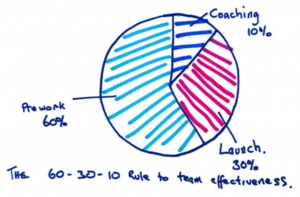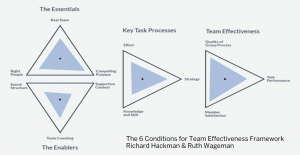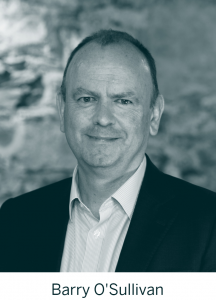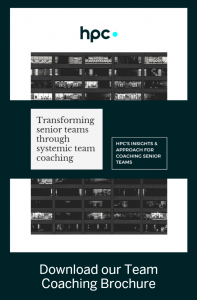HPC’s Justin Kinnear reflects on the importance of culture – its place in organisations, culture’s response to Covid and the part it has to play in the return to work.
First and foremost, culture is all about groups. The pandemic has totally shaken up our sense of groups, with some people losing connection with some groups entirely, and others deepening their connection with other groups. Without groups there is no culture. It’s not something that means anything on an individual level.
I like Edgar Schein’s explanation, which I will paraphrase. He describes culture as the way groups have learned to successfully solve problems over time, such that they are willing to teach these solutions to new members of the culture. Think of how office staff show a new colleague how to make the fiddly coffee machine work by deviating slightly from the instructions. This notion of culture being a teachable way that we solve problems means that when the problems are dramatically and suddenly different (the pandemic) we need to suddenly change how we solve them. Covid has already caused us, in small ways, to change our culture. How we connect, how we meet, how we collaborate and solve problems ‘virtually’ – these are all small examples of how our culture (Deal and Kennedy’s “the way we do things around here”) is changing already.
Culture is soft (unquantifiable) and lasting, meaning we don’t really like to change too much too soon. So, as we focus on the return to work / hybrid working possibility, part of our psyche is likely wondering if we can return to solving familiar problems using familiar solutions i.e. can we go back to the good old days? It’s likely that Covid has changed things far more dramatically than we imagine, and therefore some of the changed approaches to solving problems will remain as part of the newly evolved culture, even when back in the office. Leaders that reassure people that new and better ways of solving problems will be part of the new culture send a powerful message that gains will be locked in and not lost once we return to the office.
Culture is also about who we define ourselves as, whether as IBMers with long service to the organisation, as Googlers or whatever group we see as our tribe. We identify with many groupings – at a team, unit, organisational or national level. This facet of culture allows us to decide who is ‘of our culture’ and who is not. This can be helpful to create togetherness and pride in the collective effort, but it can also be limiting, excluding and divisive. Our sense of what we are part of is changing, and we see ourselves now as being part of so much more than a handful of exclusive groups or tribes. Whether we choose to or not, others will also tend to bracket us into neat categorisations, and this can also be unhelpful as they hold onto outdated ideas about who we are and what we contribute. The pandemic has shaken our sense of culture as an identifier, since we can’t be in the office, wear our “work attire”, or do all the things that set us apart from others.
Culture has historically been seen as something that is defined and role-modelled by leaders. In the past we have narrowly defined leaders as those in hierarchical positions of influence, and those peers that we tend to look up to and respect. Covid has made it harder for those leaders to reach us, and much more effort has been required to keep channels open and keep communication flowing. But it’s easy to see why, fatigue aside, leaders need to keep communicating in a pandemic. If you don’t inform them, someone else will, and they may not have the organisation’s or the employee’s best interests at heart. If you want to shape culture, keep leading by regularly communicating. Let people know you’re there, that you care, and that you’re willing to spare some time to keep them in the loop.
There are two final facets to culture that are worth mentioning when it comes to the pandemic.
Culture often shows up through the imagery and architecture of a business, the stories that are told about heroes and successes, the rituals and customs that everyone “knows” about. These things confer status, prestige, and difference and during the pandemic have lost much of their value. When we can’t see them, we don’t consider them. Employees value these facets of belonging to a culture so the leader’s challenge is to acknowledge them when they are far away, show people how they will come back in some form, and to bridge the gap if they will not be part of the future by suggesting something different and more appropriate.
The final aspect of culture to note is the importance of culture as it sustains the lifespan of a team or organisation. As we learn how to solve problems over time and lock in those learnings, we teach them and those who learn will go on to teach others. This learning and sharing approach creates and supports longevity of practice and allows a team or business to keep doing what it’s doing for an extended time. We know Covid has changed the problems, and this means new ways of solving, some of which we have yet to teach and share with colleagues. This can shake the stability of a team or business, as much appears to be suddenly unstable. Leaders have a role to play in setting out a vision of what the culture will evolve into, almost the picture of where we are now and where we hope to be in X months or years. Helping people to accept that the culture is changing, and to explain and explore why, allows people to experiment and put a tentative foot forward into the new way of doing things. We all want to know where we’re going, and that’s a vital input from the leader. Leaders may not know exactly what the end stage looks like, but they can set a path forward to cover the next year or so and allow people to start looking forward through the windscreen instead of gazing back nervously into the rear view mirror. The leader that shows that a team has a future, that we’ll need to evolve to get there, and that we know the plan for the first couple of kilometres will get their team moving forward more quickly than a leader who is waiting for all the detail to become clear before saying anything.
Culture is how we have learned to solve problems in groups. New problems need new solutions, which drives new culture. Leaders, in the broadest sense, help, encourage, support, and reinforce those attempts to find new and better solutions.
We might not be fully back in the office yet. We might be navigating the challenges of implementing a hybrid working strategy. But we can all help, support, encourage and reinforce our teams as they look for new solutions to entirely new problems during this prolonged pandemic stage.
Justin Kinnear is Head of Research at HPC. His passion for people development and his ability to inspire makes him a key member of HPC’s facilitation and coaching teams.
As well as his extensive research and facilitation experience, he was formerly Head of L&D at IBM and Britvic.
His work with HPC focuses on the development of a high performance culture for our clients with a particular emphasis on accountability and feedback.










